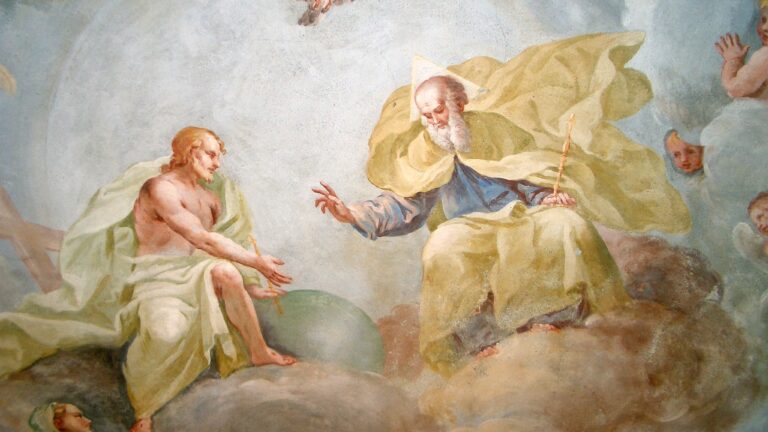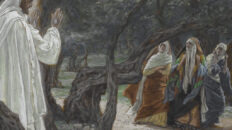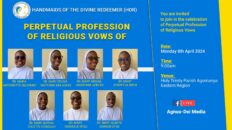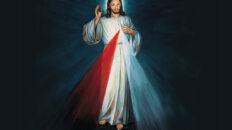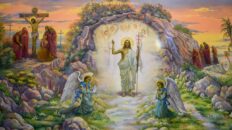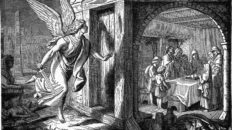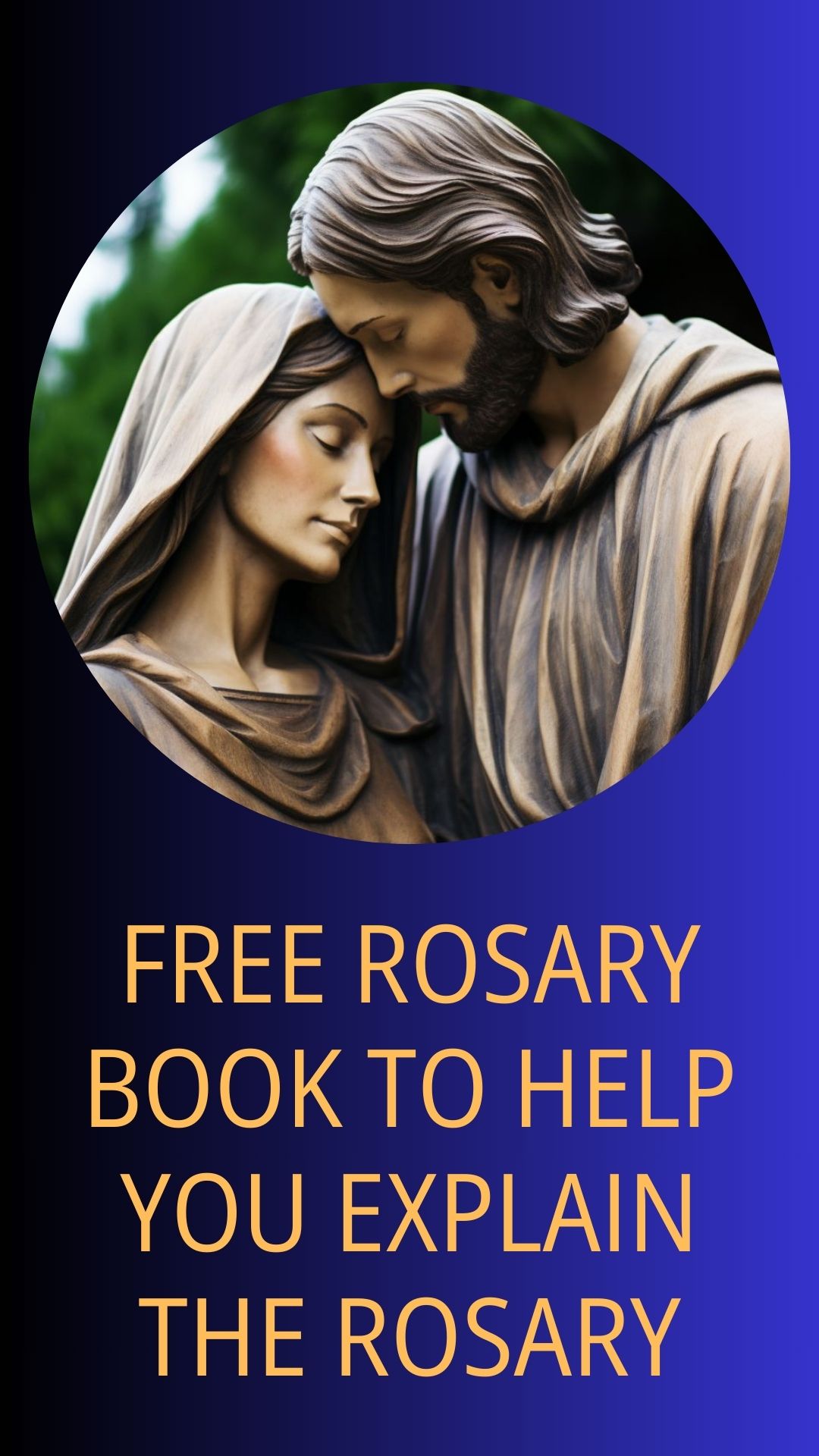THEME: ONE GOD, THREE PERSONS
READINGS: Exodus 34:4-6, 8-9/ 2 Corinthians 13:11-13/ John 3:16-18
Solemnity of the Holy Trinity
The mystery of God far surpasses the capacity of the human mind and heart; and so, it had to be revealed gradually to us. It is like receiving a long SMS text message, with only part of it initially showing; and later on, getting the full message. Thus, the Letter to the Hebrews begins with these words: “God has spoken in the past to our ancestors through the prophets in many different ways, although never completely, but in our times He has spoken definitively to us through His Son” (Heb. 1:1-2; NCBCE).
That is, only part of God’s message of salvation was revealed to the people of the Old Testament. However, in the Son of God, Jesus Christ, the fullness of revelation has been given to us. In line with this gradual unfolding of the mystery of God, only the Oneness of God was revealed to the people of the Old Testament. Thus, when Moses encountered God to receive the commandments, His Oneness or uniqueness was emphasized (cf. Exodus 34:4-6, 8-9). For example, the great commandment states: ‘Hear, O Israel: The Lord our God is one Lord; and you shall love the Lord your God with all your heart, and with all your soul, and with all your might’ (Deut. 6:4-5).
Fast forward to the New Testament, Jesus reveals to us that, in the mystery of God who is One, there are three Divine Persons: the Father and the Son and the Holy Spirit. This is what we call the Holy Trinity. Thus, for instance, according to today’s gospel reading, besides God (the Father), there is the mention of the Son of God: ‘For God so loved the world that He gave His only Son, that whoever believes in Him should not perish but have eternal life’ (John 3:16). Furthermore, Jesus, the Son of God, would promise us the Holy Spirit (Acts 1:8), who then descended in a spectacular way on Pentecost day (Acts 2:1-11).
Now, three years before the Pentecost event, the mystery of the Holy Trinity was revealed at the event of the baptism of Jesus Christ, though it was not immediately comprehended. That is, Jesus was baptized, the Father’s voice called Him, ‘my Beloved Son’ and the Holy Spirit descended as a dove (Matt. 3:16-17). It is, therefore, no wonder that Jesus would command His disciples to baptize using a formula that expresses belief in the Holy Trinity: ‘Baptize them in the name of the Father and of the Son and of the Holy Spirit’ (Matt. 28:19). This faith in the Holy Trinity is what St. Paul expressed in the conclusion of his Second Letter to the Corinthians: ‘The grace of the Lord Jesus Christ, the love of God, and the communion of the Holy Spirit be with all of you’ (2 Cor.13:13: NRSVCE).
We may illustrate the mystery of the Holy Trinity with the following:
- An Egg: As the shell, the white substance and the yoke make up an egg, so the Father, Son and Holy Spirit are together one God.
- In Mathematics: 1 X 1 X 1 = 1, so the Father, Son and Holy Spirit are together one God.
However, the above and all other illustrations have their limitations, because God is far greater than any created thing or human imagination or intellect:
- For instance, in the case of an egg, while the shell alone or the white substance alone or the yoke alone is not a full egg, in the case of the Trinity, the Father alone is God, the Son alone is God and the Holy Spirit alone is God; and yet altogether, they are one God.
The Nature of the Mystery of the Trinity:
The Father and the Son and the Holy Spirit are equal in divinity, power, majesty, knowledge, etc. Hence, with regard to their divinity, for instance, we profess every Sunday:
- “God from God, Light from Light, true God from true God”. That is, the Father and the Son are equally divine.
- “I believe in the Holy Spirit, the Lord, the giver of life… who with the Father and the Son is adored and glorified.” That is, the Father, Son and Holy Spirit are all worthy of worship; for they are equally divine.
The only distinction is in the area of their Persons: the Father as a Person is distinct from the Son and the Holy Spirit; in short, Three Persons are mutually distinct from each other; yet, as said already, all three Persons are one God.
Some Practical Lessons:
- Let us consciously make the sign of the cross, which is an expression of our faith in the Holy Trinity; and in public, let us do so confidently. Those of us who feel shy to make the sign of the cross in public should be encouraged by those footballers, who in the full view of thousands of spectators in the stadium and millions of TV viewers across the globe, make the sign of the cross.
- Since God is one and yet three Persons, a mystery beyond our full comprehension, we should be conscious of and acknowledge his awesomeness. Even the prophet Isaiah, who had no knowledge of the mystery of the Trinity, was awe-struck when, in a vision, he experienced the thrice-holy God. When he experienced the “holy, holy, holy! The Lord Almighty”, the prophet confessed his unworthiness (Isaiah 6:1-6). Yes, indeed, with the full revelation we have received in Jesus Christ, we can say: Holy to the Father, Holy to the Son, and Holy to the Spirit!
- Thirdly, learning from the Holy Trinity, we should endeavour to live and work in love and unity in:
- Our Family, which is trinitarian (Father + Mother + Child).
- Our Church (Clergy + Religious + Laity).
Conclusion: I wish to conclude with a threefold prayer:
- May God the Father, of Creation and Providence, provide for all our needs, amen!
- May Jesus Christ, our Redeemer, surround us with the precious blood of eternal redemption, amen!
- May the Holy Spirit sanctify us and sustain us unto everlasting life, amen.
By Very Rev. Fr. John Louis

